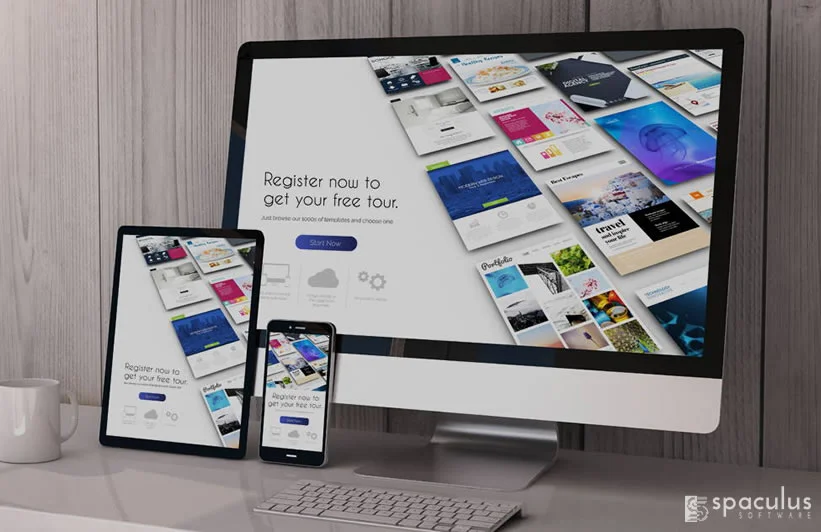
Google in the recent Kranky Geek event shared an interesting number in their session:
Its WebRTC-powered Chrome browser had people spending over 1.5 billion audio/video minutes a week for video conferencing and networking. Though it doesn’t include the data about video communication activities on other leading browsers like Safari and Firebox.
The basic concept of WebRTC as real-time communication started approximately 6 years ago and it has grown rapidly ever since. WebRTC as a technology has already gone beyond VoIP calling and serve as platforms for video conferencing, live meetings, webinars, etc.
When it comes to powerful collaboration and seamless networking, WebRTC facilitated video conferencing apps have achieved quite a milestone. Nowadays, many WebRTC-integrated apps provide the secure encrypted real-time communication, including Google Hangout, Facebook Messenger and Amazon Chime.
Here in this write-up, we are going to look into all the ways WebRTC apps can impact various industry verticals.
In 2011, WebRTC started as an open source project by Google. It provides communications between web browsers and mobile applications primarily via audio and video through its API. Google initially had it installed in-built with Gmail before it was supported in Chrome browser. It is also supported by all browsers including Microsoft Edge and iOS Safari.
With WebRTC, you don’t need to install special native plugins and apps. After Google, Facebook and Amazon also implemented WebRTC making it an essential online meeting platform. WebRTC-powered video conferencing apps are more efficient, seamless and secure than traditional solutions.
The WebRTC products are valued at $10.7 billion in 2016 in global market. This may rise to closely $23 billion in 2025 as Future Market analysts estimated.
Google Meet (or more accurately, Hangouts) is most probably one of the main reasons we have WebRTC.
Google had their own video conferencing service, working from Gmail, but it needed a plugin
WebRTC has also affected various business sectors especially because of its great flexibility and data sharing capabilities. Its much evolved video consulting apps for business and finance deliver real-time video conferencing experience. Globally, the WebRTC market stretches from North America and across Europe to Asia, the Middle East countries and Africa. North America dominates with 40% of total WebRTC market because of easy availability of high-speed internet with highest number of mobile devices.
For your urgent, detailed office meetings and presentations, Amazon Chime is probably the best quintessential example of internal video conferencing service. Amazon replaced its legacy internal video meeting service with its acquired Chime and now spends as much as 24.8 million minutes a month using its grand WebRTC application. Gotomeeting has also been around for a while and is considered as an intuitive meeting platform for a quick meeting invitations.
WhatsApp, Google Hangout and Facebook Messenger that offer audio and video call services are the primary examples that contain WebRTC technologies. The market segment of consumer messaging WebRTC claims more than 50% in 2016 due to its quick message sharing. This side of industry seems to have reached its zenith of late.
WebRTC’s webinar capability allows business enterprises and marketers to go live with users. Be it product launches or video presentations and live interactions, webRTC-based Webinar Apps development can help cover it all. You can even broadcast an interactive session, share screen, chat, ask questions, respond with polls and communicate with hosts all as live webinars.
Being a unique futuristic area in WebRTC world, smart home system laced with WebRTC and IoT can work wonders. Smart home residents who spend a lot of time working away from home can install a webRTC-powered door intercom that enable audio/video communication. They can connect with web and mobile applications to communicate easily with arriving visitors through real-time video call.
WebRTC video consulting apps for healthcare sector is the future much visible now since the telehealth service market is predicted to hit $9.3 billion by 2021. Encrypting the private patient data, WebRTC can book teleconferencing doctor-patient appointments, non-emergency clinical meetings, remote therapy, etc. there are already 500 telehealth applications based on WebRTC in mobile app stores.
Although this is a slow-and-steady innovation, WebRTC is gradually introduced to industrial manufacturing sectors using IoT-enabled devices. For instance, WebRTC solution in a smart factory can help monitor and guide automated processes to curb serious hazards. In such case, the technology can trigger a camera to remotely inspect its physical condition or to troubleshoot the equipment over video calls.
Online tutoring apps development for creating virtual classrooms is not just a trend, it is also a burgeoning necessity in Covid19-affected world. From young kids to those pursuing university degree, the possibilities and opportunities proposed by webRTC video consulting apps are ample. Education and learning sector, hence, is another area where webRTC seems to uplift and empower.
Be it Covid19 pandemic urgency or a high industry wave, WebRTC is going to be huge over time as it reinvents live communication. It has already become an indispensable meeting and conferencing solution in this crucial time, boosting the current enterprise communication system with video conferencing apps. The changing business landscape has also triggered the adoption of WebRTC across education, healthcare, manufacturing and power maintenance industries. Hence, the time to build your own WebRTC platform is now. You may consult with our seasoned WebRTC online meeting platform development experts to start working on this innovative concept.
App Development